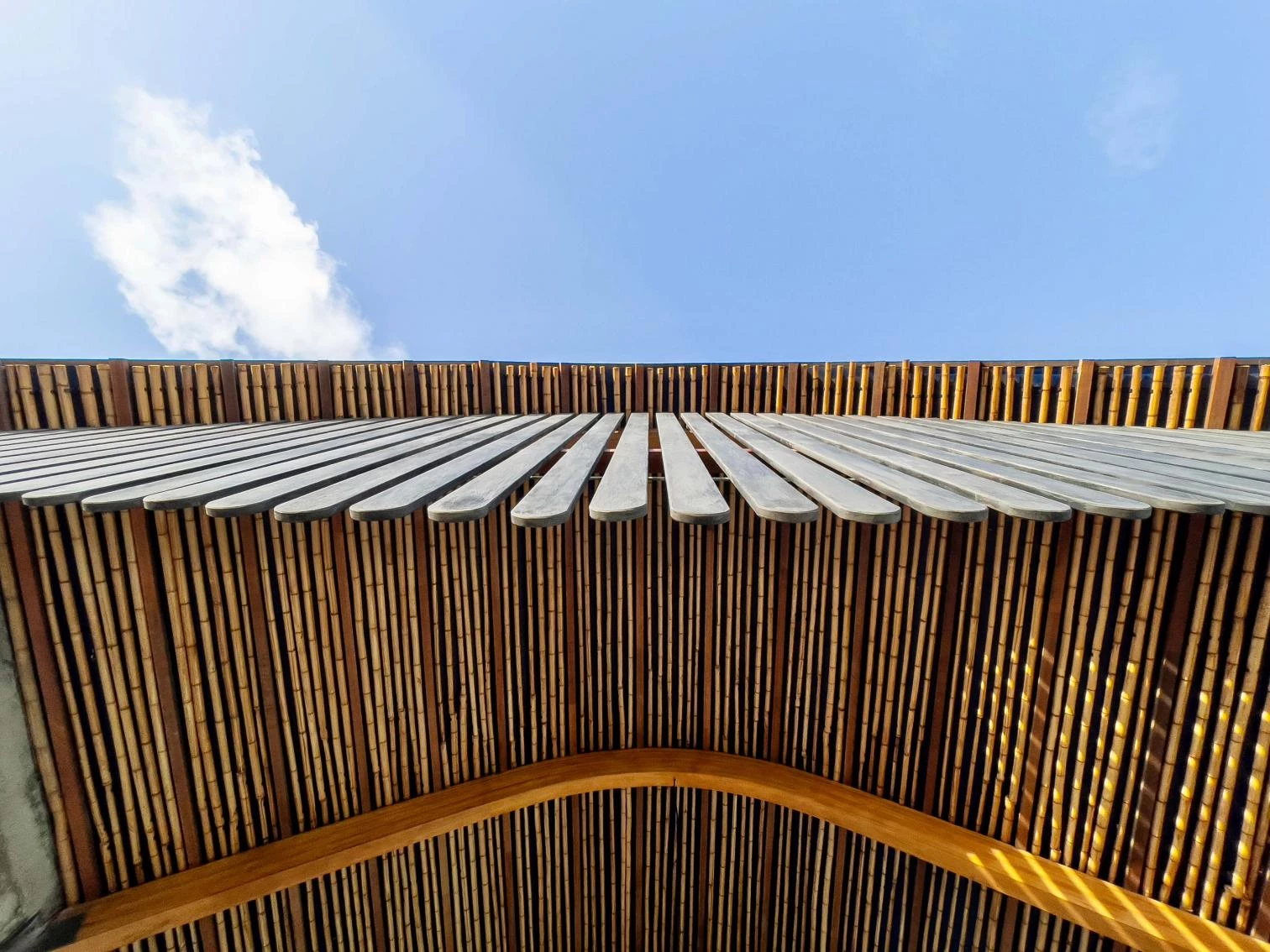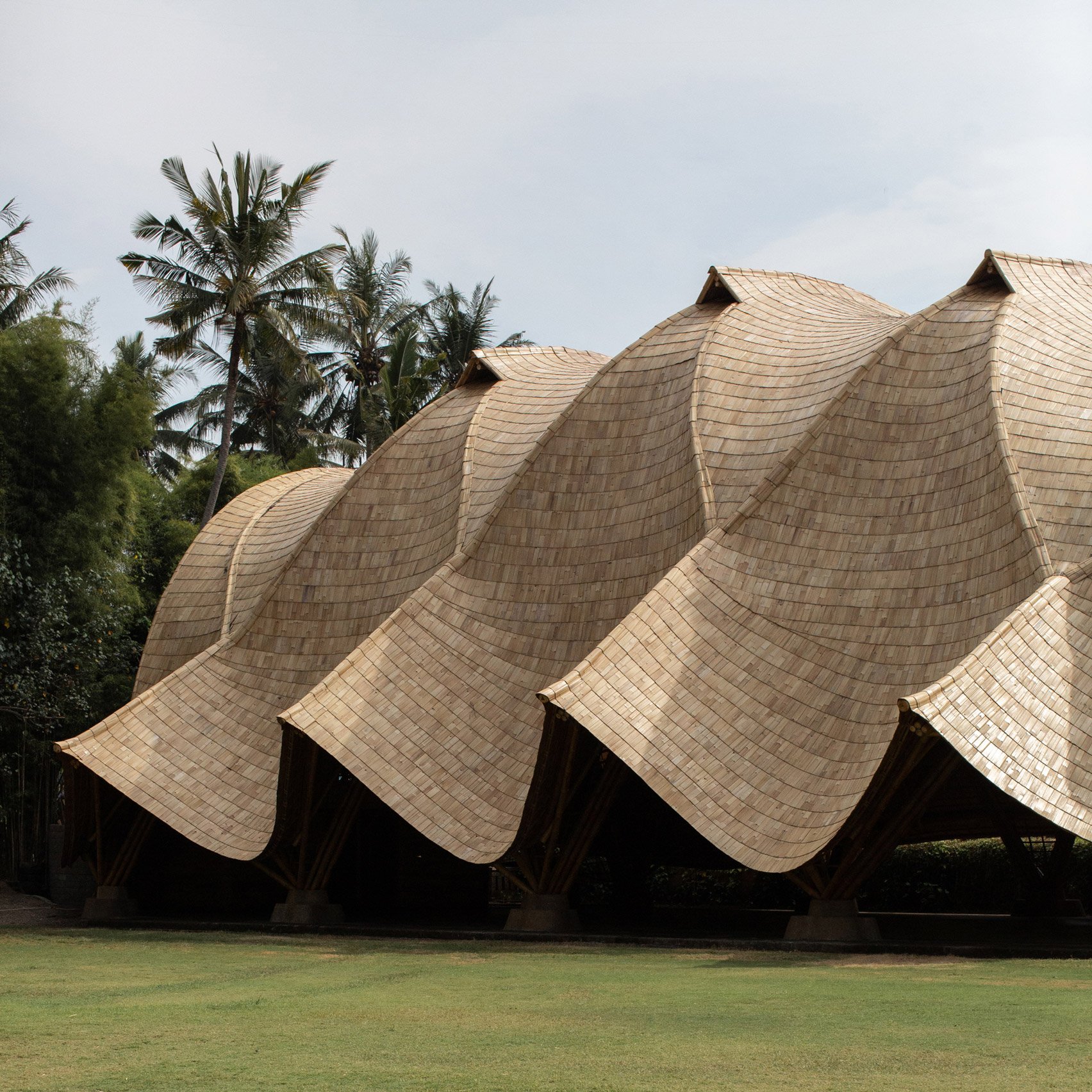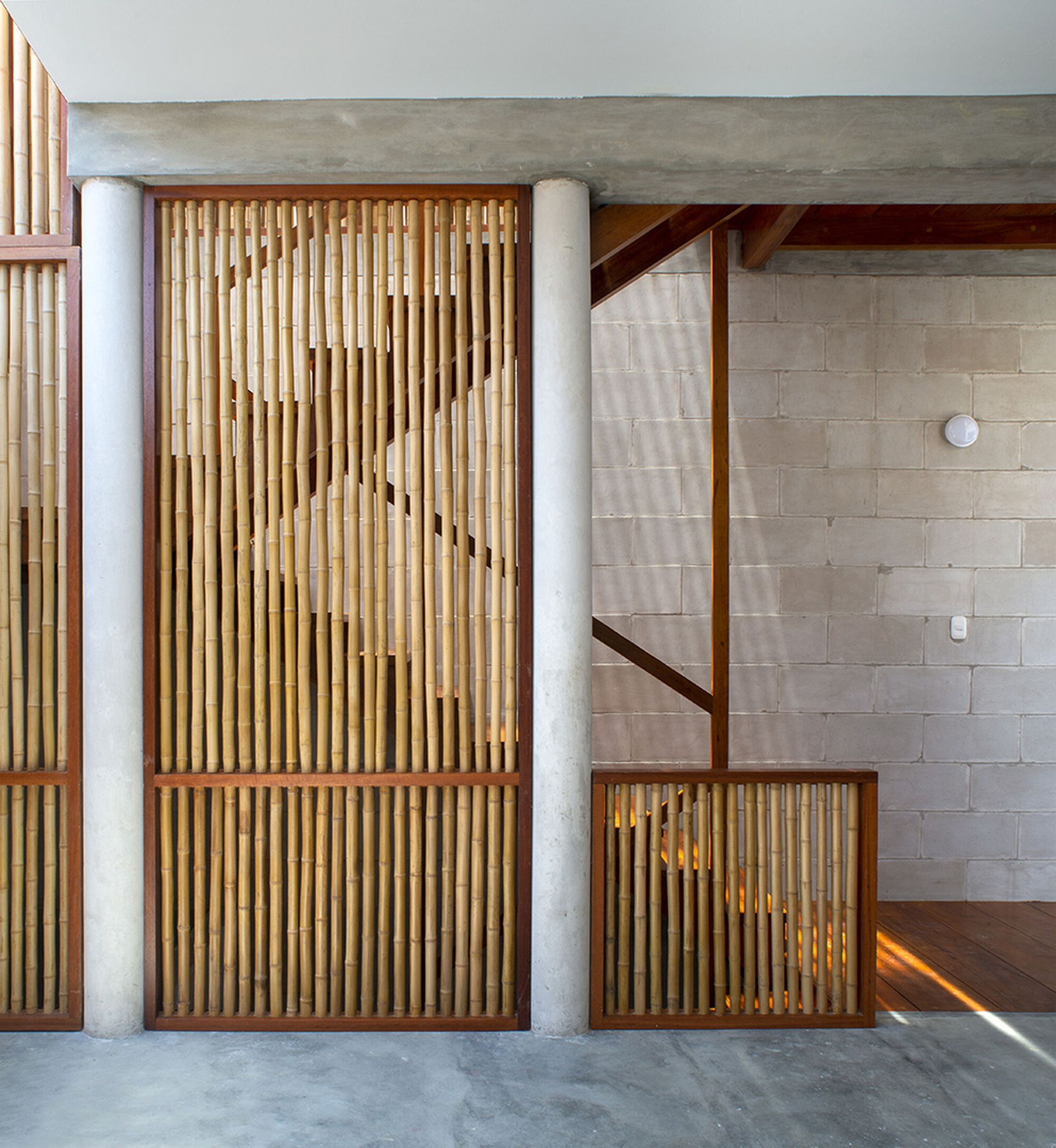At Powell Design & Construction, we're always looking at alternative, sustainable construction methods that can benefit our clients – and this time, we're focusing on bamboo.
.jpeg)
This month, our Managing Director and Lead Architect, Alexandra Powell, is working with University of Staffordshire students on the ‘Vertical Design Project’ - a collaboration with Brilliant Bamboo and Atelier One, to design and build a full-scale bamboo structure for the UK Bamboo Summit 2025.
While this is an educational project being undertaken during Alexandra's teaching role at the university, the insights we're gaining have real applications for our real-world client work.
Here's why we think bamboo deserves serious attention in UK construction.

Why Bamboo?
Bamboo is officially recognised alongside timber, concrete and steel as a structural material, yet it remains significantly underutilised in UK construction. That's starting to change, and for good reason.
Just take alook at the material properties of bamboo:
🌱 Carbon Performance – Bamboo absorbs approximately 35% more CO₂ than trees and releases more oxygen during growth. For clients focused on reducing the carbon footprint of their projects, this matters.
🏗️ Structural Strength – With tensile strength up to 28,000 N per square inch, bamboo rivals steel. It's flexible and durable, performing well in wind and seismic conditions - properties that translate to resilient structures.
♻️ Rapid Renewability – Bamboo is harvest-ready in 3-5 years, compared to 30-60 years for hardwood timber. This rapid growth cycle makes it genuinely sustainable at scale.
🇬🇧 UK Viability – Bamboo grows exceptionally well in the UK climate - up to 13cm per day. As our climate continues to change, bamboo could become a viable locally-grown construction crop, reducing transportation carbon and supporting local supply chains.

Engineered Bamboo and SIPs Panels
This is where bamboo gets particularly interesting for our residential and commercial architectural projects.
What Are Bamboo SIPs?
Engineered bamboo can be formed into boards and used to create Structural Insulated Panels (SIPs).
If you're not familiar with SIPs, they're essentially prefabricated building panels consisting of an insulating foam core sandwiched between two structural boards. Traditional SIPs use OSB (Oriented Strand Board) or plywood. Bamboo SIPs substitute bamboo board for these traditional materials.
Why This Matters for Our Clients
⏱️ Speed of Construction – SIPs dramatically reduce build time compared to traditional methods. Panels arrive on site ready to install, and a weather-tight structure can be achieved in days rather than weeks. For clients facing tight timescales or trying to minimise site disruption, this is significant.
🌡️ Thermal Performance – SIPs offer excellent insulation properties, creating highly energy-efficient buildings. With rising energy costs and increasingly stringent building regulations, this translates to lower running costs and better EPC ratings.
✏️ Design Flexibility – Despite being prefabricated, SIPs offer considerable design flexibility. We can achieve interesting architectural forms while maintaining the construction speed benefits.
🌿 Sustainability Credentials – Bamboo SIPs combine the inherent sustainability of bamboo with the energy efficiency of SIP construction. For eco-conscious clients or projects with sustainability targets, this combination is powerful.
✔️Quality Control – Factory-fabricated panels mean better quality control than traditional on-site construction. Less weather dependency and more consistent results.

The Current Challenges
We're not suggesting bamboo is a silver bullet for every project, as there are genuine challenges that need addressing.
Currently, most bamboo construction experience exists in Asia and South America. We need to develop UK-specific understanding around detailing, treatment for our climate, and building regulations compliance.
And while bamboo grows well here, we don't yet have established UK supply chains for construction-grade bamboo or bamboo SIPs. Most products are still imported.
While bamboo is recognised as a structural material, there's less established precedent in UK building control compared to traditional materials. Projects may face more scrutiny and require additional testing or documentation. Many contractors, building control officers, and tradespeople simply aren't familiar with bamboo construction either – which can create hesitancy and potentially increase costs on early projects.
Why We're Investing Time in This
Whilst Alexandra's involvement with the Vertical Design Project, in collaboration with Brilliant Bamboo and Atelier One, is in connection with her educational role at the university, it's also about staying ahead of industry developments and understanding emerging construction methods that could benefit our clients.
The construction industry needs to evolve. Traditional materials have environmental costs, supply chain vulnerabilities (as we saw with timber prices during COVID), and embodied carbon that's increasingly hard to justify.
By understanding alternative materials like bamboo now, we can offer clients:
- More options when specifying materials for their projects
- Future-proofed solutions as building regulations around embodied carbon tighten
- Innovative approaches that differentiate their developments in the market
- Genuine sustainability rather than just greenwashing
- Cost-effective alternatives as bamboo supply chains mature

So where might bamboo construction actually work for our residential or commercial clients in Staffordshire right now?
1 - Temporary Structures: Bamboo scaffolding has been used for centuries in Asia. For events, temporary site buildings, or installations, bamboo offers a sustainable, striking alternative.
2 - Garden Buildings: Studios, home offices, garden rooms - these lower-risk projects are perfect testing grounds for bamboo construction methods while building familiarity and confidence.
3 - Feature Elements: Bamboo doesn't need to be the primary structure. Cladding, screening, internal features, or architectural elements can incorporate bamboo to add interest and sustainability credentials.
4 - Extensions and Secondary Spaces: Once supply chains and industry familiarity improve, domestic extensions could be ideal applications for bamboo SIPs - fast construction, minimal disruption, excellent performance.
5 - Commercial Developments: Forward-thinking commercial clients with sustainability commitments may be interested in bamboo construction as a differentiator and genuine environmental benefit.
Bamboo won't replace traditional materials overnight, and it won't be right for every project. But as part of a broader toolkit of sustainable construction methods - alongside timber frame, SIPs, prefab systems, and traditional building - it offers genuine possibilities.
The construction industry is changing. Materials that seemed niche five years ago are now mainstream. Methods that were experimental are now standard practice. By staying engaged with these developments, we ensure our clients benefit from the best, most appropriate solutions for their specific projects.
Interested in alternative construction methods?
Whether it's bamboo, traditional SIPs, timber frame, or other innovative approaches, we're always happy to discuss how different construction methods might benefit your project.
Our experience across both traditional and alternative building systems means we can offer objective advice about what actually works for your specific situation - considering your budget, timescales, sustainability goals, and planning context.

.jpeg)








